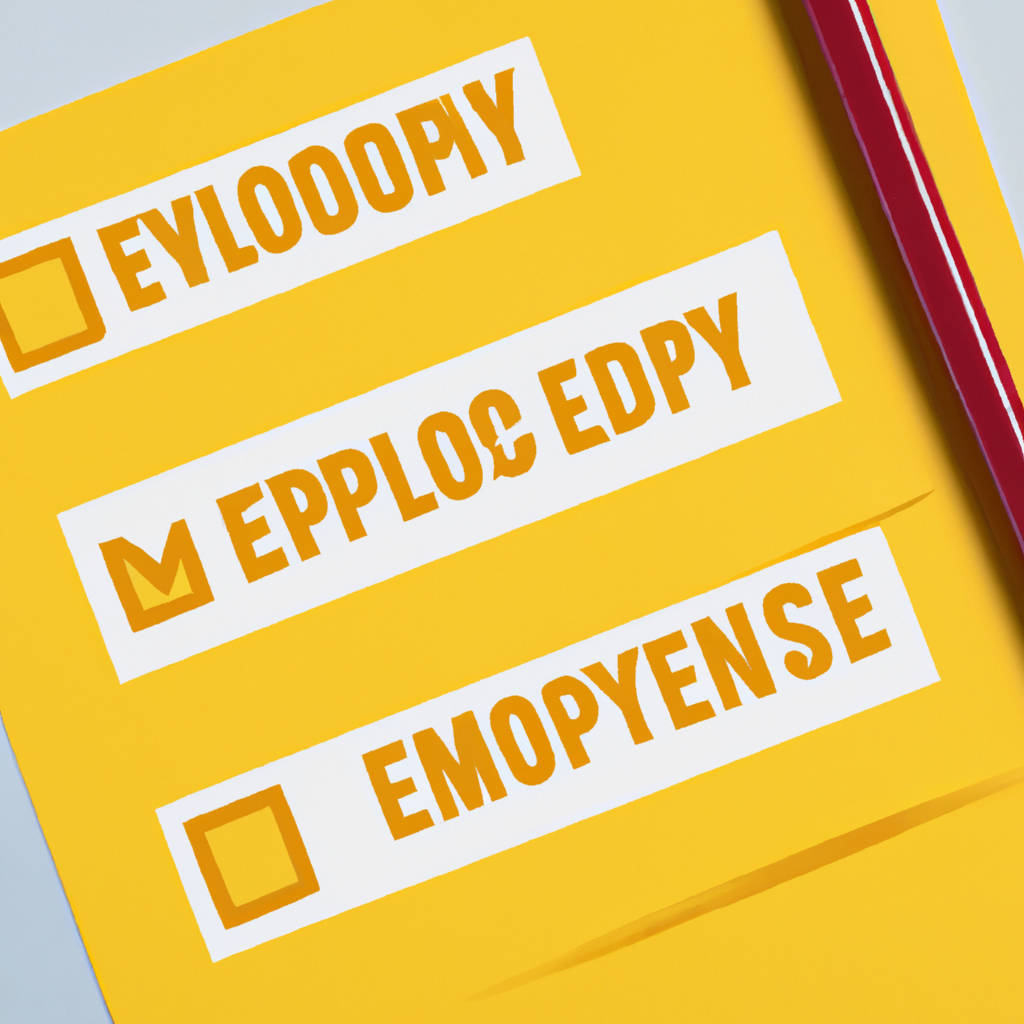Managing Angry Customers can be a challenging task that requires a specific skill set and a great deal of patience. This article presents 17 expert strategies that can be incredibly beneficial for anyone dealing with disgruntled clients. The first strategy emphasizes the importance of remaining calm and not responding with hostility, as it can exacerbate the situation. The second strategy encourages the use of active listening, which signifies that you respect the customer’s opinions and are willing to understand their viewpoint. The third strategy suggests responding with empathy to demonstrate that you genuinely care about the customer’s concerns and are committed to resolving their issues.
The fourth strategy recommends allowing the customer to vent their frustrations without interruption, as this can often help them calm down. The fifth strategy involves using positive language to help de-escalate the situation. The sixth strategy highlights the importance of apologizing sincerely for any inconvenience caused, even if the problem was not directly your fault.
The seventh strategy advises not to take the customer’s anger personally, as their frustration is usually directed towards the situation and not you personally. The eighth strategy suggests offering a solution to the customer’s problem, which shows that you value their business and are willing to go the extra mile to ensure their satisfaction. The ninth strategy involves following up after resolving the issue to ensure the customer is satisfied with the resolution.
The tenth strategy advocates for using the customer’s name during the conversation, as this personalizes the interaction and can help diffuse tension. The eleventh strategy encourages maintaining a positive attitude, even in trying circumstances. The twelfth strategy endorses training all staff in customer service skills to ensure a uniform approach to handling disgruntled customers.
The thirteenth strategy advises documenting all interactions with the customer, which can be useful for future reference and for identifying recurring issues. The fourteenth strategy encourages learning from each incident, as these situations can provide valuable insights into improving customer service. The fifteenth strategy recommends developing a clear policy for dealing with angry customers, so employees know how to respond in these situations.
The sixteenth strategy encourages taking care of yourself, as dealing with angry customers can be emotionally draining. Finally, the seventeenth strategy stresses the importance of seeking feedback from customers. This can help identify potential areas for improvement and prevent similar situations from occurring in the future. Taken together, these 17 expert strategies can help transform a challenging customer interaction into an opportunity for learning and growth.

Dealing with Angry Customers: 17 Steps
Dealing with angry customers can be a challenging task, but with the right approach, it can be effectively managed. The first step is to remain calm; responding in a heated manner can only escalate the situation. It’s crucial to listen attentively and understand the customer’s issue, displaying empathy and patience throughout the interaction. Acknowledging their feelings and expressing regret for their dissatisfaction can put them at ease and make them feel valued.
Communication skills are key in this process; it’s important to use clear, concise language and avoid using complex jargon that the customer might not understand. Apologize sincerely, even if the issue was not directly your fault. This shows that you are accepting responsibility and are committed to resolving the issue.
Try to resolve the problem promptly. If a solution cannot be provided immediately, assure the customer that their issue is a priority and that you are working on it. Keeping them updated about the progress can make them feel involved and valued. Follow up with them after the issue has been resolved to ensure they are satisfied with the outcome.
In cases where the customer is still unhappy, it might be necessary to offer compensation, such as a discount or free product. This can help restore their faith in the business and encourage loyalty.
Remember to always treat the customer with respect, regardless of their behavior. Turning an angry customer into a happy one can be a rewarding experience. It not only helps retain customers but also improves the company’s reputation.
Lastly, learn from every experience. Every customer complaint is an opportunity to improve. Analyzing what went wrong and taking steps to prevent similar issues in the future is an integral part of customer service. Being open to feedback and willing to change can make a significant difference in how you deal with angry customers.
Remember, the aim is not just to handle the issue at hand, but to turn a negative experience into a positive one. This approach can turn angry customers into loyal ones, which is beneficial for any business.
Maintain Composure
Maintaining composure is an essential skill that everyone should strive to master. It is the ability to keep cool, calm, and collected, even in the face of adversity or unexpected situations. It is essential in life because it allows us to handle stress and pressure effectively, and it helps us to make sound decisions without being influenced by our emotions. It also aids in managing relationships with others, as people are more likely to respect and listen to those who can remain composed during challenging times.
To maintain composure, one can practice mindfulness and meditation, which can help in controlling reactions and emotions. Also, regular exercise, a balanced diet, and adequate sleep can contribute to a more stable emotional state. It is crucial to remember that maintaining composure doesn’t mean suppressing emotions. It is about acknowledging them, understanding their roots, and then choosing a rational rather than a reactive response.
It is about finding balance, staying focused, and maintaining dignity and control over one’s reactions. An individual who can maintain their composure is seen as trustworthy, reliable, and mature. In conclusion, maintaining composure is a valuable life skill that contributes greatly to personal development, stress management, and relationship building. So, strive to maintain your composure, and you’ll find yourself navigating life’s challenges with grace and poise.

Listen Actively
Listening actively is a critical communication skill that entails not merely hearing words spoken by another, but fully engaging in the conversation by focusing on the speaker’s words, emotions, and the context in which they are speaking. It involves demonstrating an understanding of what the speaker is saying by acknowledging their points, asking clarifying questions, and offering appropriate responses. This skill requires concentration and a genuine interest in understanding the speaker’s perspective.
It also involves non-verbal cues such as maintaining eye contact, nodding in agreement, or showing empathy through facial expressions. Active listening is essential in building meaningful relationships, as it demonstrates respect towards the speaker. It is also vital in conflict resolution, as it facilitates a thorough understanding of the issue at hand, thereby paving the way for effective problem-solving. Furthermore, it plays a significant role in learning environments, as it allows for better comprehension and retention of information.
Businesses and organizations also benefit from active listening, as it fosters a culture of open communication, encouraging employees to share ideas, voice concerns, and contribute to decision-making processes. By harnessing the power of active listening, individuals and organizations can foster stronger, more understanding, and productive relationships.
Customize Interaction
Customize Interaction is an essential element in enhancing user experience in the digital world. It involves tailoring communication and experiences to suit the specific needs and preferences of each user. This approach is often applied in various digital platforms such as websites, applications, and online services to create a personalized experience for users. For instance, social media platforms use customized interaction to curate content based on a user’s activity, behavior, and interest, thus making the platform more appealing and engaging.
Similarly, in e-commerce, customized interaction is used to recommend products based on a customer’s purchase history, browsing behavior, and preferences. It boosts customer engagement, increases conversion rates, and enhances customer satisfaction. In digital learning platforms, customized interaction allows students to learn at their own pace, choose their preferred learning style, and access content that matches their proficiency level.
Moreover, customized interaction is not limited to digital platforms. Many businesses and organizations use this approach in their customer service to provide personalized assistance, advice, and solutions. It is also a key element in marketing strategies to create targeted advertisements and promotions.
Despite its benefits, customized interaction also presents several challenges. It requires sophisticated technologies and algorithms to collect, analyze, and utilize user data. Privacy and data protection are also critical issues that need to be addressed. However, if implemented effectively and responsibly, customized interaction can significantly improve user experience, engagement, and loyalty.

Validate Emotions
Validating emotions is a crucial aspect of maintaining healthy relationships and promoting psychological well-being. This practice involves acknowledging and accepting another person’s feelings, emotions, and experiences without judgment or dismissal. It is not about agreeing or disagreeing with them, but rather about demonstrating respect and understanding for their perspective. This can be achieved by listening attentively, expressing empathy, and using supportive language.
Validation does not mean enabling unhealthy behaviors; instead, it provides an individual with a safe space to express their feelings freely, promoting emotional regulation and resilience. It fosters a sense of worthiness, reducing feelings of isolation and loneliness. When we validate someone’s emotions, we communicate that their feelings matter, contributing to their sense of self-esteem and self-acceptance.
In contrast, invalidating someone’s emotions can lead to emotional distress, feelings of rejection, and hinder the development of trust in relationships. Indeed, emotional validation is a fundamental human need that can profoundly impact our mental and emotional health. Therefore, whether it’s with family, friends, or colleagues, we should all strive to validate emotions, fostering a sense of understanding, respect, and unity in our relationships.
Employ Positive Terms
Promoting positivity in communication is an important aspect of creating a healthy, productive environment, whether it’s in the workplace, at home, or in any social setting. This involves utilizing positive terms and affirmations, which can have a profound impact on the mood, morale, and overall well-being of individuals. When we communicate using positive language, we encourage a more optimistic outlook, instill confidence, and foster feelings of acceptance and worth.
Moreover, using positive terms can significantly influence the way we perceive ourselves and the world around us. For instance, instead of focusing on problems, we can talk about possible solutions; rather than dwelling on failures, we can emphasize learning and growth opportunities. This approach not only uplift good spirits but also promotes creativity, cooperation, and productivity. It’s also crucial in managing conflicts and disagreements, where positive language can help in resolving issues in a respectful and constructive manner.
Furthermore, expressing positive emotions and attitudes can greatly contribute to developing and maintaining healthy relationships, as it fosters understanding, respect, and empathy among individuals. It’s important to note that using positive terms is not about ignoring or denying negative situations or emotions, but rather about choosing a more hopeful and constructive perspective. Hence, we should strive to incorporate positivity in our language, as it can greatly enhance our communication, relationships, and overall quality of life.

Recap Customer Concerns
Recapping customer concerns is a crucial practice in maintaining a healthy connection with consumers and improving business performance. It involves the process of reviewing, understanding, and addressing the issues or worries raised by customers about products, services, or overall company operations. This practice is essential in ensuring customer satisfaction and loyalty to the brand.
By effectively managing customer concerns, companies can identify areas of improvement and implement changes that enhance their products or services, subsequently increasing customer satisfaction. Moreover, it helps to strengthen the relationship between the company and its customers, building trust and confidence that the company values their feedback and is committed to resolving their concerns. It also provides an opportunity for companies to learn more about their customers’ needs and expectations, which is valuable in tailoring products and services to meet these needs.
Furthermore, recapping customer concerns can be a strategic tool for boosting the company’s reputation and competitiveness in the market. It serves as a platform for demonstrating the company’s commitment to excellent customer service and its ability to handle and resolve customer issues effectively. Therefore, recapping customer concerns should be a priority for any business aiming to achieve customer satisfaction, loyalty, and overall business success.
Establish Trust
Building and maintaining trust is an essential aspect of any relationship, whether personal or professional. Trust is an invisible thread that binds two or more individuals together, ensuring a harmonious and positive interaction. The process of establishing trust is not always straightforward, and it requires continuous effort, transparency, and integrity. When a person consistently exhibits honesty, reliability, and integrity, others are more likely to respond with trust. This trust, once established, can greatly enhance the efficiency and effectiveness of interpersonal communication and collaboration.
However, it is crucial to remember that trust is fragile, and if betrayed, it can be challenging to rebuild. To prevent this from happening, one must always be truthful and avoid actions that could potentially harm the relationship. By being consistent in one’s actions, communicating openly, and respecting the other party’s views and feelings, trust can be nurtured and strengthened over time.
Moreover, trust is not one-sided – it requires reciprocity. It is not enough for one person to exhibit trustworth good behavior; both parties must be willing to act in ways that encourage trust-building. This can be achieved by being responsive to the other person’s needs, acknowledging their contributions, and showing appreciation for their efforts.
In conclusion, trust is a critical component of any successful relationship. It is built on a foundation of honesty, reliability, and mutual respect, and it requires continuous effort to maintain. By acting in ways that inspire trust, we can foster stronger, more meaningful relationships with others.

Express Gratitude
Expressing gratitude is a heartening practice that fosters a positive environment and promotes inner peace. It is a simple yet profound act of acknowledging the kindness, assistance, or love received from others. The act of expressing gratitude can take various forms – from a warm, heartfelt thank you note to the genuine appreciation reflected in one’s eyes. It’s the recognition of the value of others’ contributions to our lives, their efforts to make our journey smoother, and their loving presence that enriches our existence.
Gratitude, when expressed, triggers a ripple effect. The one expressing it feels a sense of satisfaction and joy, and the one receiving it feels acknowledged and valued. This mutual acknowledgment strengthens the bond between individuals, creating a healthier and happier society.
Moreover, expressing gratitude isn’t confined to appreciating other people. It extends to acknowledging the beauty of life, the miracles of nature, and the countless blessings we often take for granted. A serene sunrise, a perfectly brewed cup of coffee, or the laughter of a loved one are all instances that call for our gratitude.
Expressing gratitude also has numerous benefits for our mental and emotional health. It helps to reduce stress, increase optimism, and improve overall well-being. It’s a powerful tool for cultivating a positive mindset and creating a life filled with joy, contentment, and fulfillment.
In conclusion, expressing gratitude is a beautiful practice that enriches our lives and those around us. It’s a simple act with profound implications, fostering positivity, deepening relationships, and promoting a sense of peace and satisfaction.
Choose Suitable Channel
Choosing an appropriate channel is a critical decision that can significantly influence the success of your communication, whether personal or professional. This choice largely depends on the nature of the message, the intended audience, and the context. For instance, in a business setting, if you need to communicate a complex or sensitive matter, face-to-face communication or a detailed email might be the most suitable channel. On the other hand, a brief update or casual exchange might be best conveyed through a quick chat or text message.
Similarly, when reaching out to a wide audience, social media or mass email may be the most effective. Remember, the chosen medium should align with the receiver’s preference and accessibility, ensuring that the communication is received and understood correctly. In addition to this, one must also consider the cost, time, and technical requirements associated with each channel. Therefore, choosing the right channel is a strategic decision that requires careful evaluation and planning.

Apply Critical Thinking
Applying critical thinking is a crucial process in decision-making and problem-solving. It involves an objective analysis of facts to form a judgment. This process requires an individual to actively engage in a rigorous examination of any belief or form of knowledge in the light of the evidence that supports it and the further conclusions to which it tends. When applying critical thinking, one must consider various perspectives and evaluate the validity of these viewpoints through logical reasoning.
This intellectual discipline incorporates a variety of skills such as observation, interpretation, analysis, inference, evaluation, explanation, and metacognition. Critical thinking also promotes skepticism and encourages the individual to question the status quo, thus fostering creativity and innovation. It is a fundamental tool in making informed decisions and avoiding falling into the trap of misinformation or propaganda. It’s important to note that critical thinking doesn’t mean being argumentative or adversarial. It is about being able to identify, construct and evaluate arguments, as well as detect inconsistencies and common mistakes in reasoning.
Moreover, it enables one to approach problems in a systematic, logical, and coherent manner, thereby enabling one to make rational and informed decisions. Ultimately, the ability to apply critical thinking is an essential skill in navigating through the complexities of everyday life, ensuring that decisions are made based on logic, reason, and evidence, rather than on impulse, bias, or prejudice.
Avoid Personalization
Personalization is a common cognitive distortion where an individual tends to interpret events and scenarios in relation to themselves, often blaming themselves for situations that are outside of their control. This sense of self-reference can lead to significant stress, anxiety, and a decreased sense of self-worth. Therefore, it’s vital to consciously strive to avoid personalization. This does not mean one should absolve themselves from responsibility, but rather, to understand that not every negative occurrence is a direct result of their actions or behavior. It’s crucial to practice objective evaluation of different situations, understanding that external factors often play a substantial role in shaping outcomes. Struggling with personalization can sometimes result in individuals feeling overly responsible for situations that they had little to no control over. Recognizing this pattern and challenging these thoughts can significantly help in overcoming this cognitive distortion. It can be helpful to seek professional guidance in learning strategies to deal with personalization, as therapists and psychologists are trained in cognitive-behavioral techniques that can be highly effective. It’s also beneficial to remember that everyone makes mistakes, and it’s a part of being human. Instead of personalizing mistakes or negative outcomes, using them as opportunities for learning and growth can have a positive impact on one’s mental health and self-perception. Lastly, fostering a supportive network of friends and family can provide an external perspective that helps avoid personalization.

Define Clear Steps
Defining clear steps refers to the process of outlining specific, actionable tasks in a detailed and easy-to-follow manner. This strategy is crucial in both personal and professional life as it helps in achieving goals in a systematic and efficient way. Where goals can be broad, complex and overwhelming, clear steps break down these goals into manageable tasks. It’s like creating a roadmap where each step is a milestone leading you closer to your destination.
The ‘clear’ in clear steps denotes that each action is well-defined, leaving no room for ambiguity. They are simple, concise and crystal clear to anyone who reads them. Furthermore, these steps need to be logical and sequential, meaning one step follows another in a way that makes sense, thereby creating a smooth workflow. The importance of setting clear steps cannot be understated, as it fosters focus, enables accurate measurement of progress, and facilitates effective time management. It also promotes accountability as everyone involved is aware of what they are supposed to do.
Whether you’re working on a project, learning a new skill, or trying to instill a habit, defining clear steps can significantly enhance your probability of success. In addition to this, clear steps also aid in troubleshooting as they make it easier to identify where things might have gone off track, allowing for quick corrections and realignment. Hence, defining clear steps is an essential practice for anyone aspiring to reach their goals with precision and efficiency.
Maintain Consistency
Maintaining consistency is a crucial aspect for success in various domains of life. Whether it’s in the realm of personal habits, professional tasks, or relationships, consistency plays a critical role. When a person exhibits consistency in their actions, it not only benefits them but also sets a positive example for those around them. It reflects their dedication and commitment, and it builds trust among their colleagues, friends, and family.
Consistency in actions implies that a person is dependable and reliable. For example, if someone consistently arrives on time for appointments, others will view them as trustworthy and dependable. Similarly, if a person consistently performs their tasks efficiently and effectively, they are seen as reliable and competent at work.
However, maintaining consistency is not always easy. It requires discipline, commitment, and a robust mindset. There might be times when a person may feel overwhelmed or unmotivated. During such times, it’s essential to remember the ultimate goal and the benefits that consistency brings. Taking small steps towards being consistent can bring about significant changes over time.
Moreover, consistency also contributes to self-improvement. By continuously working on a particular skill or habit, a person can gradually refine it and reach a higher level of proficiency. Therefore, consistency is not just about maintaining a steady pace; it’s about constantly moving forward and improving.
In conclusion, maintaining consistency is vital for personal growth, professional success, and building strong relationships. It might be challenging to achieve, but the rewards are worth the effort. Therefore, strive to be consistent in your actions and see the positive changes it brings in your life.

Seek Solutions
Seeking solutions is a proactive approach to dealing with challenges that arise in life. It is the process of delving into the root cause of a problem or issue and discovering effective ways to address it. This is a critical aspect in both personal and professional life as it promotes growth, development, and progress. One must embrace a mindset that is geared towards problem-solving rather than dwelling on the problem itself.
This is not to diminish the importance of acknowledging the problem but rather to emphasize the necessity of moving beyond it. The act of seeking solutions involves analyzing situations, brainstorm good ideas, and implementing effective strategies. It also involves learning from failures, adapting to changes, and constantly improving. It is a continual process that requires patience, resilience, and determination. It fosters a sense of responsibility and ownership as one takes charge and strive to find ways to overcome the hurdles. It also encourages collaboration as it often necessitates open communication and teamwork.
This process does not promise an instant fix, but it assures a clearer perspective on the situation at hand. By seeking solutions, one opens up to the possibility of transformation and innovation. It provides an opportunity to learn, grow, and improve. It is a testament to human resilience and adaptability, showcasing our innate ability to rise above difficulties and navigate through life’s complexities.
Request Assistance
Requesting assistance is an integral part of human interaction and society functioning. It emphasizes the essential nature of interdependence among individuals and communities. Assistance can be sought in various forms and for a myriad of reasons – it could be as simple as asking for directions or as complex as seeking professional advice on a challenging project. The ability to ask for help when needed is a sign of self-awareness and humility.
It acknowledges personal limitations while simultaneously appreciating the strengths and expertise of others. However, it is crucial to ask for help respectfully, ensuring that one’s request does not infringe on the rights or personal boundaries of others. It is also important to offer assistance in return, fostering a culture of mutual support and cooperation. In business settings, requesting assistance can help foster teamwork, facilitate problem-solving, and ultimately contribute to the achievement of shared goals.
The process of seeking assistance can also promote learning and growth, as the interaction often involves the exchange of knowledge and skills. Despite societal pressures that often equate asking for help with weakness, it is important to remember that everyone, at some point, needs assistance, and there is no shame in seeking it. Requesting assistance, therefore, is not a sign of incapacity but a reflection of our shared human experience, characterized by mutual dependence and continuous learning.

Team Knowledge Sharing
Team knowledge sharing is an essential aspect of successful teamwork and overall organizational growth. It refers to the mutual exchange of information, skills, and expertise among team members, aimed at fostering learning, innovation, and improved performance. This concept is particularly crucial in today’s dynamic business environment, where fast-paced changes necessitate continuous learning and adaptation. Team knowledge sharing can occur through various avenues, such as team meetings, workshops, training sessions, online platforms, or even casual conversations.
Effective team knowledge sharing can significantly enhance problem-solving capabilities, as it brings together diverse perspectives and insights, thereby enabling more comprehensive and innovative solutions. It also promotes cohesion and trust among team members, as they learn from each other and appreciate each other’s contributions. Furthermore, it can lead to the development of new skills and competencies, thereby enhancing individual and team capacity.
However, team knowledge sharing is not without challenges. Factors such as lack of time, reluctance to share, and fear of losing unique value can hinder its practice. Hence, it’s critical for organizations to cultivate a conducive environment that encourages openness, respect, and mutual support. Incentives and recognition for knowledge sharing can also be effective motivators.
In conclusion, team knowledge sharing is a vital tool for organizational success. It not only enhances team performance and innovation but also fosters a culture of learning and collaboration. Therefore, it deserves attention and promotion in every team and organization.
Last Resort: Hang Up
When all other options seem to have been exhausted, and an individual finds themselves embroiled in a distressing or uncomfortable conversation, the last resort may be to simply hang up. It is in these situations where one must assert their personal boundaries and protect their emotional wellbeing. This action is not to be seen as an impolite dismissal, but rather as an act of self-preservation.
In the realm of telemarketing or unsolicited calls, for example, the recipient is under no obligation to continue a conversation that they find bothersome or intrusive. Often, the most effective way to end such a call is simply to disconnect. Of course, this action should be taken with the understanding that it may not always be the most diplomatic solution. However, it is crucial to remember that everyone has the right to remove themselves from situations that they perceive as threatening or distressing.
Whether it is an undesirable sales call, a heated argument, or an unwanted personal interaction, the act of hanging up can serve as a powerful tool in maintaining one’s personal peace. It is a last resort action, a symbolic gesture that signals the end of a conversation, the assertion of one’s boundaries, and the preservation of one’s personal space. So, when faced with a situation where all other options have been expended, don’t be afraid to exercise your right to hang up.
